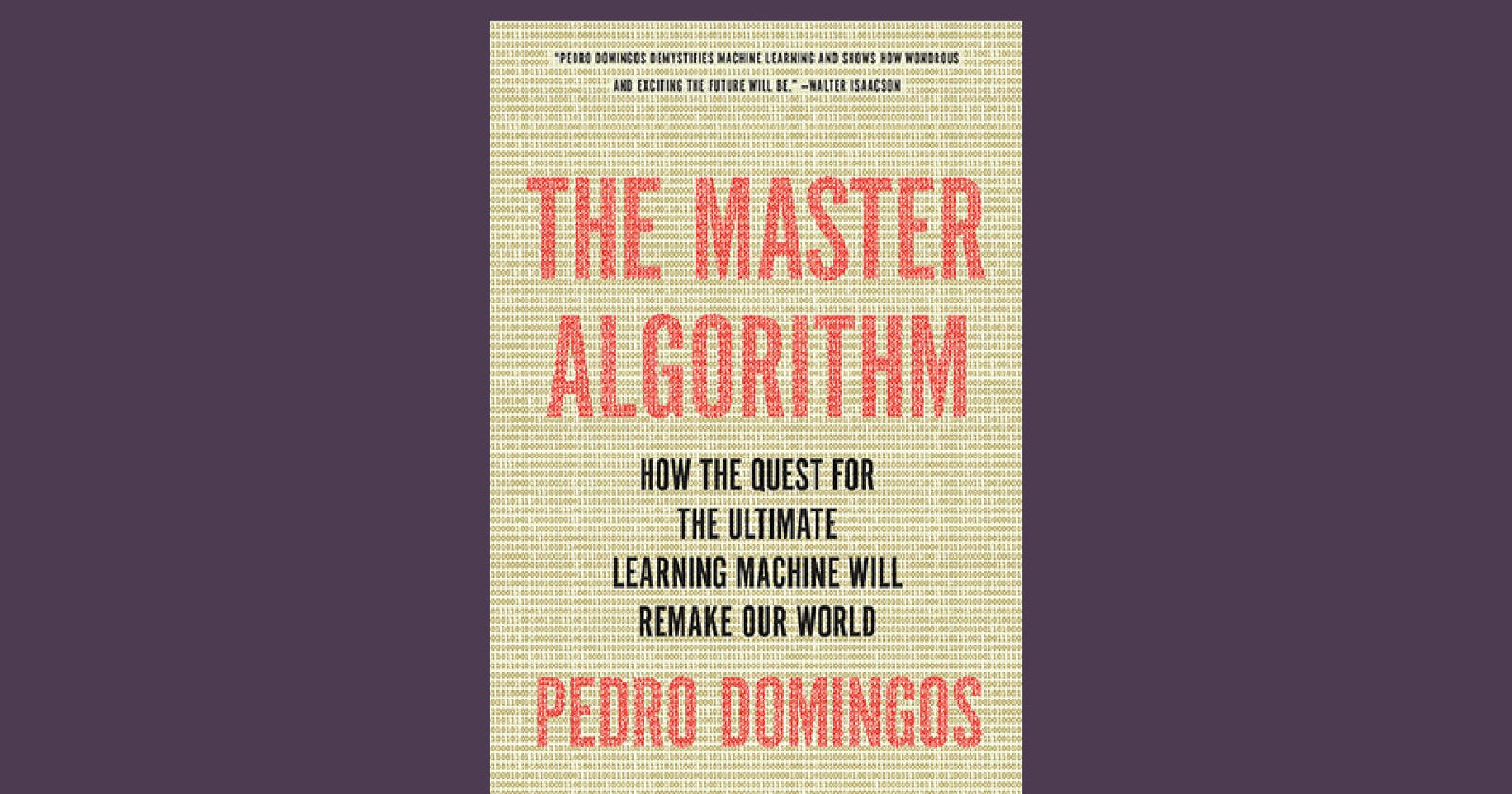What 'The Master Algorithm' by Pedro Domingos Teaches us
A book that teaches us the key concepts of algorithms
This book provides an overview of machine learning at a high level. It is my intention in this article to provide a concise summary of the book's primary topics.
This article may be thought of as an overview, much as the book itself provides an overview of all of the major topics of machine learning theory and practice.
Machine learning may be found everywhere around us, ingrained in the technology and equipment that we use daily in our lives. Unfortunately, they have become so ingrained in our daily routines that we seldom take the time to recognize their significance.
Machine learning is a novel concept in technology: it is a system that creates itself. In machine learning, the artifact is referred to as a learning algorithm.
Humans have always been involved in the design of objects, whether they are handcrafted or mass manufactured.
Learning algorithms, on the other hand, are artifacts that are used to develop other artifacts. Thus, a learning algorithm is similar to a master craftsman. Every one of its creations is unique and meticulously customized to the client's specific demands who commissions it.
However, rather than transforming stone into architecture or gold into jewelry, learners transform data into algorithmic structures. Furthermore, the more data they have, the more complex the algorithms may get.
In The Master Algorithm, Pedro Domingos attempts to present a conceptual model of the topic, i.e., basic knowledge, to facilitate its application. There are several learning algorithms available, and new ones are created every year.
The book gives an overview of machine learning algorithms by classifying the users. Each category is referred to as a tribe by Domingos. Each tribe has its own master prediction algorithm.
And he wants to empower the reader with the ability to create the master algorithm. A layperson entering the forest from afar is in some ways more equipped than an expert already entrenched in the study of certain trees.
Thus, you, too, can be a data scientist by just lying back and conjuring up a "master algorithm" without any prior knowledge of mathematics.
Domingos continues,
"We may fill in the mathematical specifics, but that is not the purpose of this book, and certainly not the most critical aspect."
I suppose we are all considered Einsteins capable of devising game-changing thought experiments that will permanently alter the field.
Domingos advises the reader to pay close attention to each tribe and get a broad understanding of what they do and the tools they use.
Seeing each tribe as a jigsaw component makes it possible to get conceptual clarity about the whole area.
What Is the Master Algorithm?
According to Domingos, the algorithms, such as the closest neighbor, decision tree, or naive Bayes, are domain agnostic.
This raises the issue, "Is it possible for a single algorithm to master all domains?" For example, if you estimate a parameter using a frequentist approach and then verify it using Bayesian inference, both parameters will have the nearly same distribution if there is a large amount of data.
Regardless of the model chosen, a flood of data will almost always result in parameter convergence. The fact, however, is that there is a dearth of data, necessitating the use of assumptions.
Certain classes of learning models are superior to others based on the nature of the issue and the kind of assumption. For example, if one assumes the existence of a master algorithm, the associated assumptions must likewise be included as input.
Bottom Line
By and large, the book seeks to educate readers on how modern technology works and how much computing can do to improve their lives. In addition, it provides several instances of how machine learning enables this.
However, do not expect that just reading this book on the topic will provide you with a thorough understanding of how machine learning works.
Sorry, but you really do need to be familiar with computer science, statistics, and mathematics for that.
In summation, the Master Algorithm would be recommended for newcomers and practicers to be developed alike. Thus, a good and precious introduction to a highly sophisticated topic may be seen.
His forward-looking promises are cautiously acceptable, but all in all, this new book provides a thought-provoking technological guide that touches all of us.
